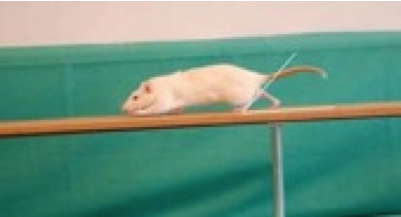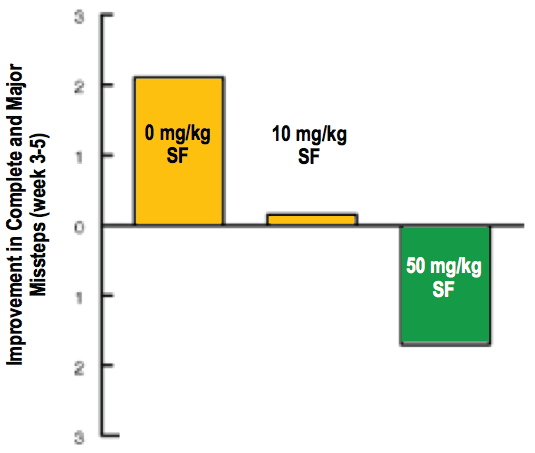Traumatic spinal cord injury leads to oxidative stress, calcium mobilization, the release of pro-inflammatory factors, and depletion of glutathione (GSH; the body’s most prevalent antioxidant) at the site of injury.
Induction of the Nrf2 pathway by sulforaphane (SF) can alleviate neurotoxicity by protecting against GSH depletion, lipid peroxidation, intracellular calcium overload, and excitotoxins.
Sulforaphane can also attenuate inflammation by inhibiting the primary inflammatory pathway and a major pro-inflammatory cytokine (MIF).
We then demonstrated functional and anatomical recovery following contusive spinal cord injury.

Functional improvement in performance is measured using standardized tests such as the horizontal ladder test, in which number of missteps made in completing a standard course are tallied.

When rats were treated with sulforaphane immediately after traumatic spinal cord injury (+3 hours):
- Improved gait
- Partial return to normal step pattern
- Reduced activity of signal inflammatory marker (MIF tautomerase)
- Improved behavioral scores
- Increased serotonergic (5- HT) motor neuron staining caudal to the lesion, suggesting more spared or sprouted nerve axons